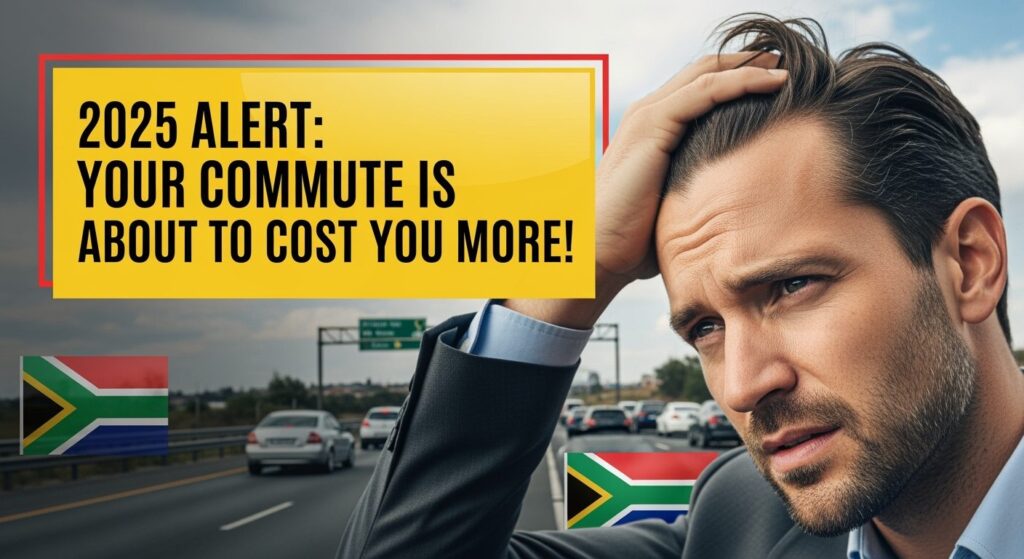Commute Cost Increases: If you’re someone who drives to work daily, I’ve got some news that might affect your wallet. The September 2025 Traffic Updates are rolling out across major cities, and they include several changes that could significantly impact your commuting expenses. Transportation authorities have announced new congestion pricing models, increased toll rates, and revised parking fee structures set to take effect next month. These changes are part of a broader initiative to reduce traffic congestion and promote sustainable transportation alternatives. But what does this mean for your daily routine and, more importantly, your monthly budget? Let’s dive into the details of these upcoming changes.

What Changes Are Coming in September 2025?
The September 2025 Traffic Updates include several key modifications to existing traffic management systems. First, congestion pricing will be implemented in 12 additional urban centers, charging vehicles entering downtown areas during peak hours. Second, toll rates on major highways and bridges will see an average increase of 15-20%, with higher rates during rush hours. Third, smart parking meters will introduce dynamic pricing, meaning you’ll pay more for parking during high-demand periods. Finally, there’s a new digital tracking system being rolled out that will monitor vehicle movements for more accurate congestion management. These changes are designed to reduce traffic volume by encouraging carpooling, public transportation use, and off-peak travel.
Why Are These Traffic Updates Being Implemented?
Transportation authorities cite several reasons for the September 2025 Traffic Updates. The primary motivation is reducing the growing congestion that costs the economy billions annually in lost productivity and fuel waste. Environmental concerns also play a significant role, as fewer vehicles on the road mean reduced carbon emissions. Additionally, revenue generated from these increased fees will fund infrastructure improvements, including road repairs and public transit expansions. Officials argue that while commuters may face higher costs initially, the long-term benefits include shorter commute times, improved air quality, and better-maintained roadways. The updates also align with international climate commitments that require significant reductions in transportation-related emissions by 2030.
 Weekend Rain Alert September 2025 – Heavy Rainfall to Impact Several South African Regions
Weekend Rain Alert September 2025 – Heavy Rainfall to Impact Several South African Regions
How Will This Affect Your Daily Commute?
The September 2025 Traffic Updates will likely change how you plan your daily travel. If you’re commuting during peak hours, you could see your transportation costs increase by 25-40% depending on your route and mode of transport. To manage these costs, you might need to adjust your schedule to travel during off-peak hours when possible. Carpooling will become more financially attractive, potentially saving you hundreds each month if you share rides regularly. Public transportation, while also seeing some fare increases, will generally remain the most cost-effective option for urban commuters. Remote work arrangements may become more valuable as employers recognize the financial burden these changes place on their staff.
 Youth Support Grant R12,500 September 2025 – Applicants Advised to Prepare Documents Early
Youth Support Grant R12,500 September 2025 – Applicants Advised to Prepare Documents Early
| Commute Type | Estimated Monthly Increase |
|---|---|
| Solo driving (peak hours) | $120-180 |
| Carpooling (3+ people) | $30-50 |
| Public transit | $15-25 |
When Should You Start Preparing?
Although the September 2025 Traffic Updates won’t take effect until next month, I recommend you start planning your adjustments now. Begin by calculating your current commuting costs as a baseline. Then, use the published rate changes to estimate your new expenses under different scenarios. If carpooling seems viable, reach out to colleagues who live nearby to discuss arrangements. For public transportation options, familiarize yourself with routes and schedules that could work for your commute. If you have flexibility in your work hours, talk to your employer about adjusting your schedule to avoid peak pricing periods. Many employers are already developing programs to help employees manage these increased costs, so check if yours offers commuter benefits or remote work options.
Real-World Impact Example
Take the case of Sarah, a marketing professional in Chicago who currently drives 18 miles each way to her office downtown. Under the new September 2025 Traffic Updates, her daily expenses will increase from approximately $25 (including gas, parking, and existing tolls) to nearly $40 per day. That’s an additional $300 monthly. After analyzing her options, Sarah arranged to work remotely two days per week and joined a carpool with three colleagues for the remaining days. These adjustments reduced her monthly increase to just $85, saving her over $200 compared to maintaining her current commuting habits.
The September 2025 Traffic Updates represent a significant shift in how our cities manage traffic flow and commuter behavior. While the immediate financial impact may be challenging for many, these changes also create opportunities to rethink our daily routines and potentially adopt more sustainable and cost-effective transportation habits. Have you started thinking about how you’ll adapt to these upcoming changes? The time to prepare is now, before these new costs hit your wallet next month.



